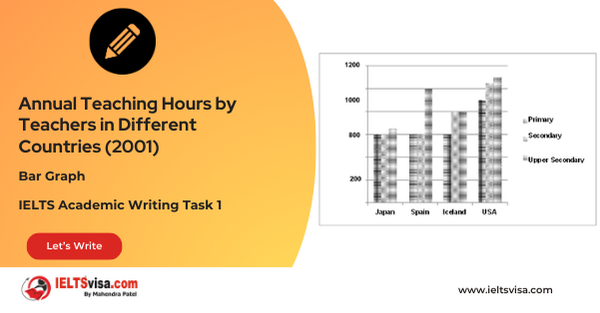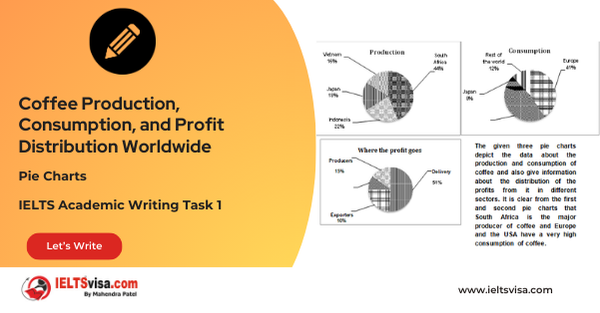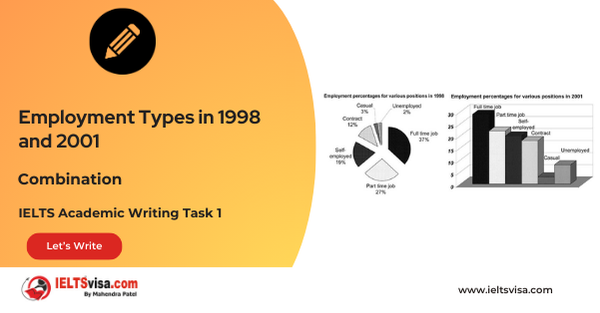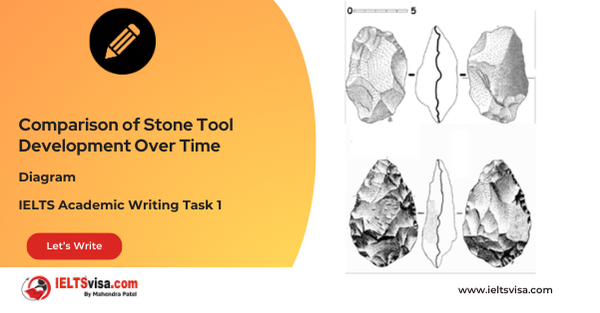Number of Enquiries to Tourist Information Office by Communication Method (January–June 2001)
IELTS Academic Writing Task 1 - Line Graph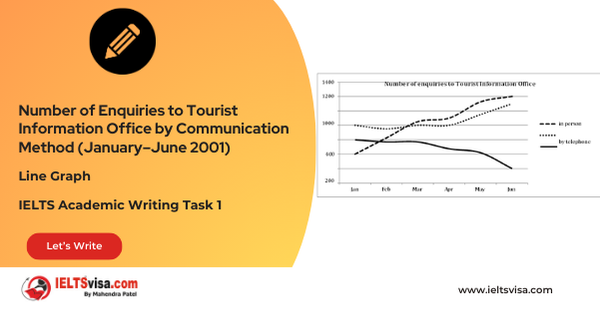
IELTS Writing Task 1 Question
The graph below shows the number of enquiries to tourist information office made by telephone, letter/email, and in person from January 2001 to June 2001. Summarise the information by selecting and reporting the main features, and make comparisons where relevant.
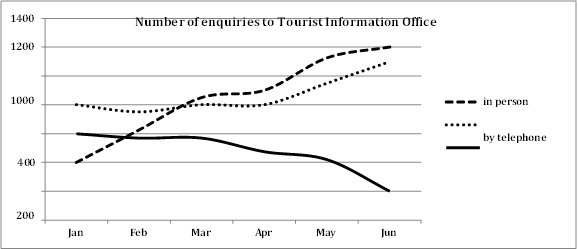
Common Questions for the Line Graph
1. Graph Type: Line Graph
2. Title: Number of Enquiries to Tourist Information Office by Communication Method (January–June 2001)
3. What are the units of measurement?: Number of enquiries
4. Who: Tourists or people making inquiries
5. When: January to June 2001
6. Where: Tourist Information Office
7. Topic: Trends in inquiries by communication method
Comparison Showing and Trends Any change over time (such as an increase or a decrease) is a trend.
Comparison 1: In-Person Enquiries (Steady Increase)
- Details:
1. Rose steadily from 400 in January to 1200 in June.
2. Became the most popular method by the end of the period.
Comparison 2: Telephone Enquiries (Fluctuations)
-
Details:
1. Started at 800 in January and remained stable until April.
2. Increased to 1100 by June, showing a moderate upward trend overall.
Comparison 3: Letter/Email Enquiries (Decline)
-
Details:
1. Began at 600 in January and stayed steady until March.
2. Declined steadily, hitting a low of 200 by June.
Sample Answer
The line graph illustrates the number of inquiries made to a Tourist Information Office through in person, by telephone, and by letter or email between January and June 2001.
Overall, in-person inquiries experienced the most significant growth, becoming the most popular method of communication by June. Telephone inquiries also increased moderately, while the use of letters and emails saw a noticeable decline over the period.
In January, the number of in-person inquiries was the lowest at 400 but grew consistently, surpassing other methods in April and reaching a peak of 1200 by June. Telephone inquiries, which began at 800 in January, remained stable until April and then rose steadily to 1100 by June.
Conversely, letter and email inquiries started at 600 in January and remained constant until March. However, they saw a steady decline from April onward, dropping to an all-time low of 200 by June.
Top 27 Vocabularies
| Vocabulary | Type | Meaning | Synonyms | Examples |
|
Inquiry |
Noun |
A request for information |
Question, Query |
In-person inquiries rose significantly during the period. |
|
Stabilize |
Verb |
To remain steady or unchanged |
Steady, Level off |
Telephone inquiries stabilized at 800 until April. |
|
Decline |
Verb/noun |
To decrease steadily |
Drop, Decrease |
Letter/email inquiries declined to 200 by June. |
|
Peak |
Verb/noun |
To reach the highest point |
Summit, Climax |
In-person inquiries peaked at 1200 in June. |
|
Fluctuation |
Noun |
Irregular rise and fall |
Variation, Oscillation |
Telephone inquiries showed minor fluctuations before rising. |
|
Communication |
Noun |
The exchange of information between people or groups |
Interaction, Correspondence |
“In-person inquiries became the most popular method of communication.” |
|
Moderate |
Adjective |
Average in intensity or degree |
Slight, Modest |
“Telephone inquiries increased at a moderate rate.” |
|
Consistently |
Adverb |
Happening in a steady and reliable way |
Regularly, Constantly |
“In-person inquiries grew consistently over the period.” |
|
Method |
Noun |
A way or approach of doing something |
Approach, Technique |
“By June, in-person communication became the preferred method.” |
|
Correspondence |
Noun |
Written communication, especially letters or emails |
Messaging, Communication |
“The number of inquiries via correspondence declined significantly.” |
|
Preference |
Noun |
A greater liking for one option over another |
Inclination, Choice |
“Tourists showed a growing preference for in-person inquiries.” |
|
Significant |
Adjective |
Noticeable or important |
Substantial, Remarkable |
“In-person inquiries experienced significant growth.” |
|
Plateau |
Verb/Noun |
To reach a stable point without further increase or decline |
Stabilize, Level off |
“Letter inquiries plateaued at 600 until March.” |
|
Surge |
Noun/Verb |
A sudden increase in numbers or activity |
Spike, Escalation |
“There was a surge in in-person inquiries after April.” |
|
Trend |
Noun |
A general direction of change |
Pattern, Movement |
“The graph highlights trends in communication preferences.” |
|
Gradual |
Adjective |
Happening slowly over a period |
Slow, Incremental |
“Telephone inquiries showed gradual growth from April to June.” |
|
Markedly |
Adverb |
In a way that is easy to notice |
Noticeably, Clearly |
“Letter inquiries declined markedly in the second quarter.” |
|
Decline |
Noun/Verb |
A continuous decrease in quantity or quality |
Drop, Reduction |
“The steady decline in letter inquiries continued through June.” |
|
Surpass |
Verb |
To go beyond or exceed |
Outpace, Excel |
“In-person inquiries surpassed telephone inquiries in April.” |
|
Steady |
Adjective |
Constant and reliable in pace |
Consistent, Gradual |
“The growth of telephone inquiries was steady over time.” |
|
Fluctuate |
Verb |
To rise and fall irregularly |
Vary, Oscillate |
“Inquiries fluctuated in the earlier months.” |
|
All-time low |
Noun phrase |
The lowest recorded point in history |
Record low, Bottom |
“Letter inquiries dropped to an all-time low by June.” |
|
Recovery |
Noun |
An improvement after a decline |
Rebound, Revival |
“Telephone inquiries showed signs of recovery after March.” |
|
Dominant |
Adjective |
Most important or influential |
Leading, Primary |
“In-person inquiries became the dominant mode by June.” |
|
Persistent |
Adjective |
Continuing to exist or occur over a long period |
Continuous, Lasting |
“The decline in correspondence was persistent throughout the period.” |
|
Evident |
Adjective |
Clearly seen or understood |
Obvious, Apparent |
“A clear trend was evident in the increase of in-person inquiries.” |
|
Marginal |
Adjective |
Very small or minimal in effect |
Slight, Insignificant |
“There was only a marginal increase in telephone inquiries initially.” |

Our Books
Master IELTS Speaking Part 1
IELTS Writing Task 1 Book
IELTS Writing Task 2 Book
Practice IELTS Other Modules
IELTS Listening
The IELTS Listening test assesses how well you can understand spoken English in various contexts. It lasts about 30 minutes and is divided into four sections with a total of 40 questions. The listening tasks become increasingly difficult as the test progresses.
IELTS Academic Reading
The IELTS Academic Reading section assesses your ability to understand and interpret a variety of texts in academic settings. It is designed to evaluate a range of reading skills, including skimming for gist, reading for main ideas, reading for detail, understanding inferences, and recognizing a writer's opinions and arguments.
IELTS Speaking
The IELTS Speaking test assesses your ability to communicate in English on everyday topics. It lasts 11-14 minutes and consists of three parts: introduction, cue card, and a discussion based on the cue card topic.
IELTS General Reading
IELTS General Reading tests your ability to understand and interpret various types of texts. Here are some key areas and types of content you can expect to encounter in the reading section, along with tips for effective preparation.
IELTS Academic Writing Task 1
In IELTS Academic Writing Task 1, you are presented with a visual representation of information, such as graphs, charts, tables, or diagrams, and you are required to summarize, compare, or explain the data in your own words.
IELTS General Writing Task 1
In IELTS General Writing Task 1, you are required to write a letter based on a given situation. The letter can be formal, semi-formal, or informal, depending on the prompt. Here’s a breakdown of the key components to include in your letter
IELTS Academic Writing Task 2
In IELTS Academic Writing Task 2, you are required to write an essay in response to a question or topic. Here’s a guide to help you understand the essential elements of this task
IELTS Exam Tips
To succeed in the IELTS exam, practice regularly, familiarize yourself with the test format, improve your vocabulary, develop time management skills, and take mock tests to build confidence.
Grammer for IELTS
Grammar is the foundation of effective communication in English. Understanding tense usage, subject-verb agreement, and sentence structure enhances clarity and coherence in writing and speaking.
Vocabulary for IELTS
Vocabulary plays a crucial role in the IELTS (International English Language Testing System) exam, especially in the Speaking and Writing sections. Here’s an overview of why vocabulary is important and how it impacts your performance
RECENT IELTS SAMPLES QUESTIONS AND ANSWERS
Task 1 – Column graph – Percentage of Young People Enrolled in Universities in 2000 and 2007.
20:00 Start Pause Stop [df_adh_heading title_infix="IELTS Writing Task 1 Question" use_divider="on"...
Task 1 – Bar Graph – Annual Teaching Hours by Teachers in Different Countries (2001)
20:00 Start Pause Stop [df_adh_heading title_infix="IELTS Writing Task 1 Question" use_divider="on"...
Task 1 – Pie Charts – Coffee Production, Consumption, and Profit Distribution Worldwide
20:00 Start Pause Stop [df_adh_heading title_infix="IELTS Writing Task 1 Question" use_divider="on"...
Task 1 – Column graph – Types of Transport Used by Tourists Visiting New Zealand from Five Countries in 2004.
20:00 Start Pause Stop [df_adh_heading title_infix="IELTS Writing Task 1 Question" use_divider="on"...
Task 1 – Bar and Pie Chart Combination – Employment Types in 1998 and 2001
20:00 Start Pause Stop [df_adh_heading title_infix="IELTS Writing Task 1 Question" use_divider="on"...
Task 1 – Diagram – Comparison of Stone Tool Development Over Time
20:00 Start Pause Stop [df_adh_heading title_infix="IELTS Writing Task 1 Question" use_divider="on"...


